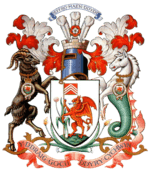Timeline of Cardiff history
The timeline of Cardiff history shows the significant events in the history of Cardiff which transformed it from a small Roman fort into the modern capital city of Wales.
The word Caerdyf has its origins in post-Roman Brythonic words meaning "the fort of the Taff". The fort probably refers to that established by the Romans. Caer is Welsh for fort and -dyf is in effect a form of Taf (Taff), the river which flows by Cardiff Castle.[1]
.jpg)
The Roman settlement
75: A Roman fort at Cardiff, where Cardiff Castle now is, was established.[2]
380s: The Romans abandoned Cardiff.[2]
The Viking settlement
445: The first written mention of Cardiff was made in the Annates Cambriae (The Welsh Annals).[3]
850: The Vikings attacked the Welsh coast. They used Cardiff as a base and then as a port. Street names such as Dumballs Road and Womanby Street come from the Vikings.[3]
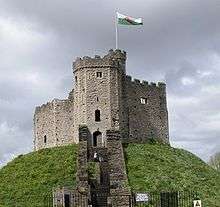
The Norman town
1081: William the Conqueror led an army through southern Wales and may have erected defences at Cardiff on the site of the old Roman fort.[2]
1100: A small town outside the castle was establishing itself. It was made up primarily of settlers Norman/Saxon people.[4]
1111: Cardiff town walls were first mentioned by Caradoc of Llancarfan in his book Brut y Tywysogion.[5]
1126: Ralph "Prepositus de Kardi" took up office as the first Mayor of Cardiff.[6]
1158: Ifor Bach, Lord of Senghenydd attacked Cardiff Castle and carried off William of Gloucester, Lord of Glamorgan.[2]
1294: The Glamorgan Welsh attacked Cardiff Castle.[2]
1315: Llywelyn Bren, a great-grandson of Ifor Bach,[7] attacked Cardiff Castle.[2]
1318: Llewelyn Bren executed at Cardiff as a traitor.[2]
1327: Cardiff declared a Staple Port.[2]
1404: Owain Glyndŵr captured Cardiff Castle.[2]
.jpg)
The county town of Glamorganshire
1536: The legislative union of England and Wales (Laws in Wales Acts 1535–1542) was established.[2] The shire of Glamorgan was established and Cardiff became the county town and the Herbert family became the most powerful family in Cardiff.[4]
1551: William Herbert, Earl of Pembroke, became the first Baron Cardiff (Baron Herbert of Cardiff).[4]
1542: Cardiff became a free borough.[2]
1574: Henry Herbert, 2nd Earl of Pembroke, began restoration work to Cardiff Castle.[4]
1595: The first shipment of coal was exported from Cardiff docks.[8]
1608: King James I granted a Royal Charter to the town of Cardiff.[9]
1610: A map of Cardiff was produced by John Speed.[2][10]
1648: The Battle of St. Fagans was fought between the Parliamentarian Army and the Royalists.[2] It was the last major battle to occur in Wales; some 8,000 Royalists were defeated in a two-hour fight by 3,000 Parliamentarian troops of the New Model Army with about 200 soldiers, mainly Royalists, killed.[4]
1737: Flat Holm Lighthouse was built.[11]
1766: John Stuart, 1st Marquess of Bute married into the Herberts, the great local landowning family.[4]
1774: An Act of Parliament established the Improvement Commissioners, responsible for paving, cleaning streets and providing oil lamp lighting in Cardiff.[12]
1776: John Stuart was created Baron Cardiff of Cardiff Castle.[4]
1778: The reconstruction of Cardiff Castle began.[11]
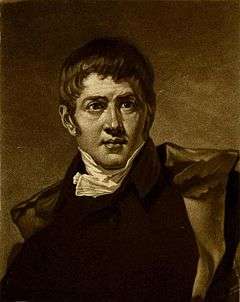
19th-century growth of Cardiff
1793: John Crichton-Stuart, 2nd Marquess of Bute was born. He is later described as the creator of modern Cardiff, building the Port of Cardiff.[4]
1815: Boat service between Cardiff and Bristol was established, running twice a week.[11]
1819: Cardiff Free School for boys and girls was opened.[11]
1821: Cardiff Gas Works was established.[11]
1826: The first theatre in Cardiff, the Theatre Royal, was opened.[11]
1832: A new county gaol was built in the Spital Field (the site of the present Cardiff Prison).[11]
1835: Elections take place on 26 December to Cardiff's new Borough Council.[13]
1836: The first meeting of Cardiff's Borough Council takes place on 1 January. Thomas Revel Guest became the first elected Mayor of Cardiff[13] and also Judge of the Borough Court of Record.[6]
1839: West Bute Dock opened.[11]
1840: The first railway station in Cardiff opened at Crockherbtown, owned by the Taff Vale Railway. The service ran from Cardiff to Navigation House (now Abercynon). The line was extended from Navigation House to Merthyr Tydfil in 1841 (the Taff Vale Railway, DSM Barrie 1969).
1850: Cardiff Water Company was established to provide water for Cardiff.[14]
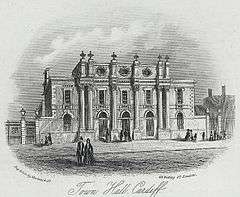
1853: The new Town Hall opened.[14]
1855: The Taff Vale Railway began a train service from the Rhondda Valley to Cardiff.[14]
1857: The last public execution in Cardiff was held.[14]
1860: The Principality Building Society was established.[14]
1862: The Guildford Crescent Baths were opened in April by the Cardiff Baths Company Ltd, including two swimming pools, a Turkish bath and a gymnasium.[15]
1863: The Royal Arcade opened, the first of many shopping arcades in Cardiff.[14]
1865: James Howell established Howells department store.[14]
1867: Cardiff Cricket Club was established with Cardiff Arms Park as its ground.[14]
1872: Cardiff Castle Clock Tower was completed.[14]
1876: Cardiff Arms Park hosted the first rugby game between Cardiff Rugby Club and Swansea Rugby Club.[4]
1879: The Cardiff Town Council took over responsibility of the water supply from the Cardiff Water Company.[4]
1881: The first grandstand was built at Cardiff Arms Park; it held 300 spectators.[4]
1882: Opening of the new Cardiff Free Library, Museum and Schools for Science and Art in The Hayes.
1883: The National Eisteddfod was held in Cardiff.[4]
1884: The Cardiff Arms Park hosted its first international match, a rugby union encounter between Wales and Ireland.
1885/6: In the rugby season, Frank Hancock Cardiff RFC, introduced new 'two-centre' tactical innovation, since adopted worldwide.[16]
1886: The Coal Exchange was opened to conduct trade for the growing industry.[4][17]
1889: Cardiff became a county borough, Cardiff County Borough Council was independent of the new Glamorgan County Council.[4]
1893: Ivor Novello was born in Cowbridge Road East, Cardiff.[18]
1894: Cardiff Masonic Hall Company Ltd was established after purchasing the thirty-year-old Methodist chapel at Guildford Street.
1895: The first Welsh Grand National hunt race was run at Ely Racecourse.
1897: The Pierhead Building was built.[4]
1899: Riverside Football Club, later to be renamed Cardiff City, was formed.[19]
1903: The first building in Cathays Park, the University of Wales, Registry, was opened.[4]
1904: Cardiff Town Hall opened, later renamed City Hall.[20]
The city of Cardiff – the largest coal port in the world
1905: Cardiff was granted city status by Edward VII and the Mayor became the Lord Mayor, with the right to use "The Right Honourable".[6][9]
1907: Queen Alexandra Dock was opened; it was the largest in Cardiff.[4]
1909: The University building in Cathays Park was opened.[4] The first Clark's Pies were produced.
1910: Cardiff City played their first match at Ninian Park.[4]
1913: The record amount of around 10.7 million tons of coal were exported through Cardiff docks. This was the high point of the docks.[4]

The decline of the docks
1916: Roald Dahl was born in Llandaff, Cardiff.[4]
1919: Four days of race riots take place in June, leading to the deaths of three men.[21]
1923: The BBC began broadcasting from studios in Castle Street.[4]
1927: Cardiff City beat Arsenal 1-0 to win the FA Cup.[4]
1930: Cardiff Round Table, the local branch of Round Table Britain & Ireland, was founded, being the 26th table in the organisation.
1931: Cardiff Municipal Airport was opened on Pengam Moors.
1932: The first miners' hunger march to start in Cardiff, left for London to protest about unemployment.[4]
1935: The first RAC Welsh Rally started from Cardiff.[4]
1937: Shirley Bassey was born in Tiger Bay, Cardiff.[22]
1939: Billy the Seal died.[4][23]
1941: The heaviest German Luftwaffe raid of World War II, the Cardiff Blitz, occurred; 156 people were killed.[4]
1946: Welsh National Opera staged its first productions at the Prince of Wales Theatre.
1947: The Bute family gave Cardiff Castle to the city.[4]
1948: The Welsh Folk Museum was opened at St. Fagans.[4]
1952: The last execution took place in Cardiff Prison. Mahmood Hussein Mattan was hanged for murder, but his conviction was quashed in 1998.[4][24]
1954: Cardiff Airport moved from Pengam Moors to its current home in Rhoose.
1955: Cardiff was officially recognised as the capital city of Wales.[4]
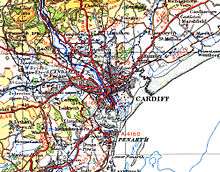
1956: Cardiff ceased being a fishing port after 70 years.[4]
1958: The British Empire and Commonwealth Games opened at Cardiff Arms Park.[14] The Wales Empire Pool opened for the Games.[25]
1959: The movie Tiger Bay was released. It was partly shot in Cardiff.[4]
1961: Public houses in Cardiff were allowed to open for the first time on Sundays since the 1880s.[4]
1963: The Rover car factory was opened.[4]
1964: West Bute Dock closed as the last shipment of coal, just 229,000 tons, left the docks.[4][26]
1966: The Heath Hospital was officially opened.[4][27]
1967: Glamorgan County Cricket Club played their first game at Sophia Gardens, having moved from Cardiff Arms Park.[4]
1970: Bute East Dock was closed.[4] Pearl Assurance House is opened in April, the tallest building in Wales.[28]
1971: The National Sports Centre for Wales opened in Sophia Gardens.[29]
1973: John Desmond Brayley MC DL was nominated for a peerage as Baron Brayley of the City of Cardiff and County Glamorgan.
1974: South Glamorgan was established as part of the local government reorganisation. Cardiff lost the independent County Borough status it had since 1889.[4]
1976: James Callaghan, MP for Cardiff, became Prime Minister of the United Kingdom.[14]
1980: The M4 motorway to the north of the city was opened.[4]
1982: S4C, the Welsh-language television channel was established.[4][30] The Ely Link Road opens.[31]
1983: BBC Cardiff Singer of the World competition was launched.[4][32]
1984: The National Stadium at Cardiff Arms Park was opened.[4]
1985: The Capel Llanilltern – Culverhouse Cross Link Road opens.[31]
1986: Wales National Ice Rink was opened and the Cardiff Devils ice hockey team established.[4]
The regeneration of Cardiff Bay and the city
1987: The Cardiff Bay Development Corporation was established to transform derelict land that had been Cardiff docks into Cardiff Bay.[4]
1988: The new County Hall was completed in Cardiff Bay.[4] The Grangetown Link Road opens.[31]
1989: Cardiff Athletics Stadium was opened in Leckwith.[4]
1995: The Butetown Link Road opens.[31]
1996: Cardiff became a unitary authority in a local government reorganisation of 1996. Cardiff reverted to its previous status of administratively-independent city.[4]
1997: Wales voted in favour of a Welsh Assembly in a national referendum, but Cardiff again voted against it.[4]
1999: The Millennium Stadium was opened to host the final of the 1999 Rugby World Cup.[4] The Cardiff Bay Barrage was opened.[4]
2001: The 2001 Census showed that the population of Cardiff was 305,353.[4]
2004: The Wales Millennium Centre was opened.[4]

2006: The Senedd, the new debating chamber for the Welsh Assembly, was opened.[4]
2008: Cardiff International Pool opened to the public at the International Sports Village in Cardiff Bay on 12 January, replacing the Wales Empire Pool that had been demolished in 1997 to make way for the Millennium Stadium.[33] The National Eisteddfod was held in Cardiff.
2009: Cardiff City Stadium and Cardiff International Sports Stadium both opened,[34][35] while Ninian Park was demolished,[36] which was part of the Leckwith development. The new Central Library opened in March.[37]
2010: Cardiff International White Water, a whitewater rafting centre, opened on 26 March at the International Sports Village.[38]
2011: Wales voted in favour of extending the lawmaking powers of the Welsh Assembly in a national referendum. This time Cardiff also voted "yes" to more powers, with over 61% of its people supporting the change. The 2011 Census showed that the population of Cardiff was 346,100, its highest actual recorded figure.[39]
2013: Cardiff City was promoted in the 2012–13 to football's Premier League, 51 years since they were last in football's top tier in 1962, but the first since the Premier League came into being.[40] They were relegated at the end of the 2013–14 season.

2016: Ice Arena Wales opened to the public, while the previous temporary structure, the Cardiff Arena closed.[41]
2017: The first phase of the Eastern Bay Link Road opened, which will eventually complete the Peripheral Distributor Road around Cardiff.[42]
2018: The National Eisteddfod returns to Cardiff. It is held in Cardiff Bay, without fences or admission charges to the 'Maes'.[43]
2019: In May the Urdd Eisteddfod returns to Cardiff after a 10-year gap, hold its first festival without admission fees in Cardiff Bay.[44]
See also
- History of Cardiff
- List of years in Wales

Notes
- Hywel Wyn Owen and Richard Morgan, Dictionary of the Place-names of Wales. University of Wales Press, 2007, ISBN 1-84323-901-9, p. 70.
- "A Cardiff & Vale of Glamorgan Chronology up to 1699". Bob Sanders. Retrieved 31 December 2007.
- "Chronology of Cardiff History". Theosophical Society. Retrieved 31 December 2007.
- "A Cardiff Timeline". Cardiffians. Retrieved 31 December 2007.
- "The Town's Wall". Herbert E. Roese. 6 March 2000. Retrieved 11 December 2011.
- "The Early Mayors of Cardiff". Cardiff Council. Retrieved 31 December 2007.
- "2000 years of history". Cardiff Castle. Archived from the original on 11 December 2007. Retrieved 31 December 2007.
- "Search for Cardiff museum ideas". BBC. 17 March 2006. Retrieved 10 January 2008.
- "A History Lovers Guide to Cardiff". GoogoBits.com. Archived from the original on 17 January 2008. Retrieved 31 December 2007.
- "An Introduction to Medieval Cardiff". National Museum of Wales. Archived from the original on 18 May 2011. Retrieved 31 December 2007.
- "A Cardiff & Vale of Glamorgan Chronology 1700–1849". Bob Sanders. Retrieved 31 December 2007.
- "A Short History of Cardiff". localhistories.org. Retrieved 31 December 2007.
- Rees, William (1969), Cardiff – A History of the City, The Corporation of the City of Cardiff, pp. 258–259
- "A Cardiff & Vale of Glamorgan Chronology 1850–1960". Bob Sanders. Retrieved 31 December 2007.
- "Corporation Baths, Guildford Crescent, Cardiff". RCAHMW. Retrieved 30 July 2019.
- 'Thomas Cook's Rugby Club', John Dann, page 14
- "A Brief History". The Coal Exchange. Archived from the original on 8 July 2007. Retrieved 31 December 2007.
- "Ivor Novello Stage and screen legend". BBC. Retrieved 31 December 2007.
- "The foundations and early years". Cardiff City Football Club. Archived from the original on 15 March 2008. Retrieved 31 December 2007.
- "A brief history". Cardiff Council. Archived from the original on 22 February 2008. Retrieved 31 December 2007.
- Aamir Mohammed (16 June 2019). "The notorious Race Riots of 1919 in Cardiff that shamed Wales". Wales Online. Retrieved 30 July 2019.
- "Shirley Bassey biography". BBC. Archived from the original on 14 September 2007. Retrieved 31 December 2007.
- "Billy the Seal". BBC. Retrieved 31 December 2007.
- "Mahmood Hussein Mattan". BBC. Archived from the original on 26 December 2007. Retrieved 31 December 2007.
- "The time the world – and the Queen – came to Cardiff for the start of the Commonwealth Games". Media Wales. Retrieved 20 January 2016.
- "Why did Cardiff grow?". Glamorgan Record Office. Archived from the original on 23 November 2008. Retrieved 31 December 2007.
- "Timeline 1951–1980". Cardiff University. Retrieved 31 December 2007.
- "View at the top...". Western Mail. 8 April 1970. p. 7.
- "About us:Elite Performance:Sport Wales-Chwaraeon Cymru". Sport Wales-Chwaraeon Cymru website. Sport Wales. 2010. Archived from the original on 24 January 2011. Retrieved 28 January 2011.
- "S4C unveils silver anniversary line-up". S4C. Archived from the original on 26 May 2011. Retrieved 31 December 2007.
- "Cardiff Timeline". Cardiff Council. Archived from the original on 29 September 2007. Retrieved 15 August 2007.
- "History of the Competition". BBC. Archived from the original on 12 February 2007. Retrieved 31 December 2007.
- "£32m Olympic pool opens its doors". BBC. 12 January 2008. Retrieved 14 January 2008.
- "Cardiff City gear up for Celtic invasion and stadium opener". Media Wales Ltd. Retrieved 14 November 2009.
- "Jacko back to his roots to open city's new sports arena". Media Wales Ltd. Retrieved 14 November 2009.
- "Floodlights fall as Ninian Park demolition continues". Media Wales Ltd. Retrieved 14 November 2009.
- "Cardiff's new library unveiled". BBC News. 6 March 2009. Retrieved 14 March 2009.
- "Cardiff International White Water – Media Day and Opening Ceremony March 2010". Cardiff Council. Retrieved 21 June 2011.
- "2011 Census First Release". Cardiff Council. Retrieved 30 March 2014.
- "Cardiff City fans celebrate first promotion to Premier League". BBC. 17 April 2013. Retrieved 30 March 2014.
- "Opening game in Ice Arena Wales delayed". Cardiff Devils. 15 February 2016. Retrieved 1 March 2016.
- "£57m Cardiff Bay road linking to east of the city opens". BBC. Retrieved 26 October 2017.
- Eryl Crump (12 August 2018). "How free entry to the National Eisteddfod could increase interest in learning Welsh". Daily Post. North Wales. Retrieved 30 July 2019.
- "First free Urdd Eisteddfod begins in Cardiff Bay". BBC News. 27 May 2019. Retrieved 11 August 2019.



